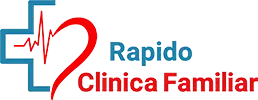Diabetes is a health condition characterized by challenges in blood sugar management. Initially, its symptoms might suddenly emerge, prompting the need for immediate checks on blood sugar levels. Conversely, in some cases, these indicators develop gradually and subtly, making them harder to recognize. Hence, understanding the early warning signals is pivotal. Furthermore, undergoing regular screening, especially when one belongs to high-risk categories, becomes crucial. Notably, for those looking to get such critical screening services, opting for advanced diagnostics in Chicago is a wise choice. This blog aims to shed light on the diverse symptoms of diabetes, underscore the value of early detection, and guide you through the recommended screening methods. By staying informed, individuals can navigate their health journeys more confidently.
Guidelines for Diabetes Screening
- For individuals having a body mass index surpassing 25 (and 23 for certain populations) accompanying additional risk factors, routine screening becomes essential. Risk factors encompass:
- Elevated blood pressure
- Atypical cholesterol levels
- Sedentary lifestyle patterns
- Past instances of specific health conditions
- Family members diagnosed with diabetes
- People aged 35 and above should undergo an initial blood sugar examination. Following a normal result, subsequent screenings every three years become essential.
- Post-gestational diabetes experiences warrant diabetes screening every three years.
- Those identified with prediabetes should undertake annual testing.
- Routine testing is vital for individuals diagnosed with HIV.
Standardized Tests for Diabetes Detection
- A1C Test
- This evaluates blood sugar averages over 2 to 3 months. It focuses on the blood sugar percentage attached to hemoglobin.
- Elevated blood sugar corresponds to more hemoglobin with attached sugar. Specific A1C levels denote diabetes, prediabetes, or normal conditions.
- Random Blood Sugar Test
- Blood samples are collected randomly. Independent of the previous mealtime, certain blood sugar levels indicate diabetes.
- Fasting Blood Sugar Test
- After nighttime fasting, blood samples reveal blood sugar levels. Established levels distinguish between normal, prediabetes, and diabetes.
- Glucose Tolerance Test
- Overnight fasting precedes this test. Initial fasting blood sugar levels are measured. After consuming a sugary solution, blood sugar gets tested at regular intervals. Specific readings post two hours can indicate diabetes or prediabetes.
For suspected type 1 diabetes cases, urine tests detect ketones. Another significant test identifies destructive immune cells related to type 1 diabetes.
Gestational Diabetes Detection
During early pregnancy, risk assessments determine the need for gestational diabetes tests. The screening period depends on individual risk levels.
Signs Indicating Diabetes Complications
Blood sugar level fluctuations can result from varied factors. Immediate attention is required for certain arising issues.
Hyperglycemia Indicators
Elevated blood sugar, known as hyperglycemia, can emerge from overeating, illnesses, or insufficient glucose-reducing medication. Symptoms to watch for are:
- Frequent urination
- Enhanced thirst
- Vision blurriness
- Exhaustion
- Persistent headaches
For hyperglycemia, meal or medication adjustments are essential.
Ketone buildup and Symptoms
When body cells lack energy, fat breakdown produces ketones, toxic acids accumulating in the blood. Symptoms to be cautious about include:
- Nausea and vomiting
- Abdominal discomfort
- Specific breath odors
- Respiratory challenges
Ketone test kits can measure urine ketone levels. Elevated ketones need urgent medical consultation, especially prevalent in type 1 diabetes patients.
Hyperosmolar Syndrome
This syndrome is characterized by thick, syrupy blood due to very high blood sugar. Symptoms encompass:
- Extreme blood sugar readings
- Profound thirst
- Drowsiness and confusion
- Vision anomalies
This syndrome is usually observed in type 2 diabetes patients, often post-sickness episodes.
Hypoglycemia or Low Blood Sugar
Blood sugar dropping below targeted ranges leads to hypoglycemia. Medications, skipped meals, or increased physical activity can be causes. Symptoms include:
- Profuse sweating
- Tremors and weakness
- Dizziness and hunger pangs
- Palpitations and irritability
Immediate carbohydrate intake, through juice or glucose tablets, can address low blood sugar.
In understanding diabetes, recognizing these symptoms and adhering to screening guidelines can ensure timely interventions and better health management.
Discover Rapido Clinica’s Modern Health Solutions
Wrapping up our journey into understanding diabetes, it’s clear that catching it early makes a big difference. Thanks to institutions that offer advanced diagnostics in Chicago, getting checked has become easier and more precise. So, moving forward, having the right knowledge helps us choose better for our health. If you, or someone you know, are thinking about diabetes screening or just want to stay on top of health, Rapido Clinica is ready to help. Step into the future of simple yet advanced health checks. Why wait? Reach out and book your appointment today!
